Although we try to cover as many iPhone 7 rumors as possible, it’s clear that the majority of the really neat bells and whistles will be probably premiere in the iPhone 8. This week our story on the iPhone 7 suggested that it will be available in three different models and most rumors predict that the the iPhone 7 will feature dual cameras and higher resolution displays. It’s still not clear if the headphone jack remains or is eliminated. Although welcome, these charges aren’t really earth shattering innovations. This week also saw a more detailed coverage from WSJ suggesting that iPhone 7 will not be as interesting as people hoped for.
Contents
BackGround
Apple’s design philosophy varies when it comes to launching different iPhone models. With iPhone 6S and the 6S Plus, it focused on providing a premium product that would command higher price points with its dedicated followers. The iPhone 6 established itself as a solid product with excellent processor speed and innovative features such as the 3D Touch and Touch ID.
With iPhone SE, Apple’s philosophy centered around target costing. Here the company wanted to build a product that was efficient, a good alternative for 4” iphone users and at a price point where it could generate momentum in sales both in established markets as well as developing markets. At less than USD $500 per mobile phone market segment, Apple always lost market share to other competitors. Introducing the iPhone SE made Apple competitive in this market segment and ensured that its existing customer base of iPhone 4S and iPhone 5 users will not jump ship.
With the iPhone 8, Apple has to position a product that can again command the premium margins like the iPhone 6 models. It will need innovative features in order to attract existing iPhone 6 users and convince them to upgrade. iPhone 6S and 6S Plus users will be hard to motivate to upgrade their gear to iPhone 7. The recent analyst upgrade notes for the Apple Stock reaffirms this contention.
So ultimately, what features must Apple have on its iPhone 8 to generate momentum and magic again, that “cool factor” that gives a brand an edge with consumers?
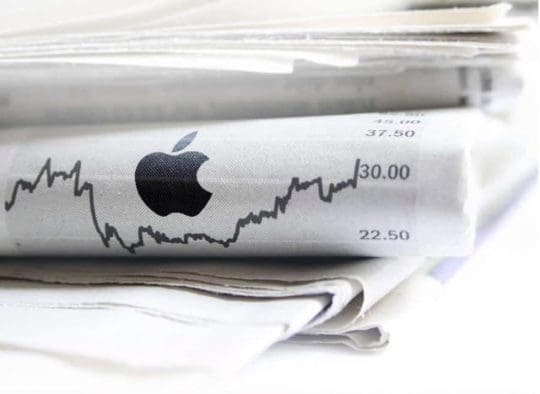
At $96 a share, it really can’t sustain its appeal to its investors. Already being branded as a value play, It needs something huge when it comes to iPhone 8 in order to stand out from the crowd and maintain its unique growth appeal with its investors.
Competitive Pressures influence Design Choices
Apple’s choices for its next generation iPhone are not only governed by the taste of its existing customers but are driven by what its competitors plan to bring to the market. By looking at Apple’s main competitor Samsung, analysts predict where and when industry forces are heading for mobile devices. In a recent article published by technews Taiwan, the next generation Samsung Galaxy S8 is rumored to have a screen resolution of 4K, equipped with 10 nm processor, a longer lasting battery, and supports dual lens. Samsung’s positioning is aligned with its core belief that mobile Virtual Reality is going to be big in the next year or two.
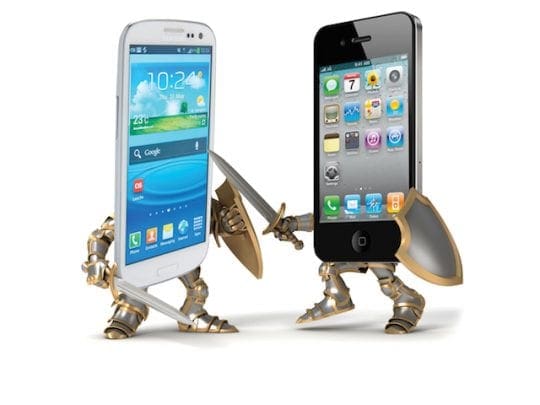
The economics are attractive for Samsung and its partners when it comes to VR. Just think about it. A new amusement ride at Six Flags Magic Mountain in Los Angeles could cost upward of $15 Million. Instead by putting together a few Samsung Gear VR’s along with mobile devices, Six Flags refreshed an old ride for around $1 million dollars. The publicity generated by this VR experience, tagged “The New Revolution Virtual Reality Roller Coaster: This Changes Everything!” shows up in their bottom line. That’s a huge return of investment for Six Flags and positions the Samsung as a game changing brand with mobile devices powerful enough to provide a Virtual Reality Experience. And this is just one example. Other B2B avenues where Samsung can leverage its powerful S8 are movie theatres, cruise ships, and other entertainment venues, places where a Virutal Reality Experience is a natural fit.
Apple has largely been absent from the Virtual Reality and Augmented Reality scene with the minor exception of a few patents acquired last year.
Although the competitive pressures from Samsung will be a top item on the list, we should also consider the other other emerging phone makers that are giving Apple a run for its money in other parts of the world. For example, OPPO’s new phones have been a hit with the young Chinese demographic this year.
So how does Apple counteract the growing Samsung momentum when it comes to designing a premium product such as the iPhone 8?
The Basics
Headphone Jack
Yup, we said it again. To have or not to have. Rumors have gone back and forth on this attribute when it comes to the next iPhone 7 model. Up until this week, it was largely believed that Apple will do away with the headphone Jack in its upcoming iPhone 7 model. This week, reports suggested otherwise. The popular Japanese Mac blog, Macotakara.jp, leaked pictures suggesting that Apple may not be dropping the headphone jack in the iPhone 7 after all. This would mean that the iPhone 8 will definitely be missing the built in headphones jack. More on that later.
Display Specs
For Starters, iPhone 8 will need to support a jaw dropping display it be competitive against the Samsung S8 4k screen.
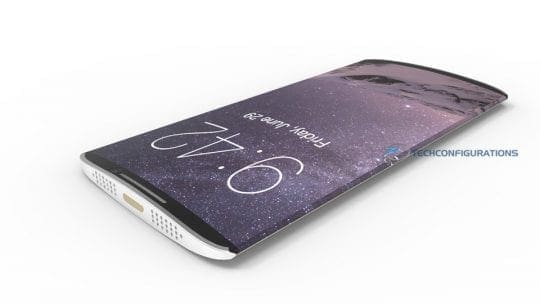
While Samsung has standardized quad HD in its range of mobile devices, Apple has yet to produce a smartphone-sized device which is even full HD. If we believe patents and rumors, Apple has made some very interesting moves in this space. Sources close to the Apple supply chain are already suggesting that the iPhone 7 will be the last ever LCD smartphone from the corporation. Almost every industry expert has said that Apple will move from LCD to OLED panels. However, KGI Securities analyst Ming-Chi Kuo expects the jump to occur around 2018 or 2019. This story too changes. As of this week, there are rumors that Apple may be providing the AMOLED based displays starting in 2017. Moving to the AMOLED displays will reduce battery consumption making the iPhone 8 a more efficient machine. And given that most users complain about lack of sustained battery life, this feature would be very welcome by consumers.
Memory Upgrade
Over the years, Many Apple users have complained that the entry level 16GB doesn’t really cut it. People are always struggling with memory usage. We think that starting with iPhone 7 release, the initial memory available on the iPhone will be increased to perhaps 32GB with a max memory of 256GB. The RAM on the 5.5 inch models are currently at 2GB. This is definitely going to be updated for the iPhone 8 model to 3GB. Given that Apple has opened up its Siri SDK and made it more accessible to third party developers, the phones would need more RAM along with the processing power to provide for good user experience on the new Apps.
Processors
Current iPhones use 14- or 16-nanometer chip designs, depending on whether they’re built by Samsung or TSMC. Shrinking down size further would allow not just compact designs but better power efficiency. 7-nanometer chips could be a possibility for a 2018 “iPhone 8,” although Apple might be forced to use 10-nanometer chips depending on supplier progress.
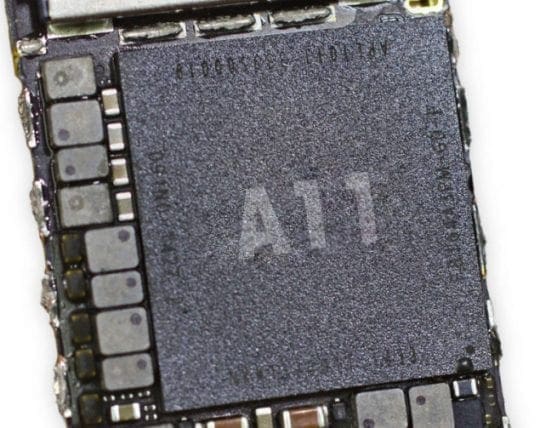
Built in Wireless Charging
This feature may be over-rated. You can very easily convert your existing iPhone 6 to wireless charging mode with a few electronic components and some basic DIY. However, Apple could have introduced this feature in its earlier flagship iPhone models like the S6 or SE. Even the Samsung S7 supports this feature. It should be a staple feature of the upcoming iPhone 7 models and may have additional bells and whistles with iPhone 8. Advances in wireless charging have also been seen in the last two years. Qualcomm’s Quick Charge technology, and similar fast charge solutions from other manufacturers, have arisen to address this problem, reducing the time it takes to bring a depleted battery back to a usable level from hours to mere minutes. The new Qualcomm technology also makes wireless charging for phones with metal casing possible. At the end of the day, if Apple adopts a wireless charging technology, it will need to up its ante when compared to the Samsung offerings in this space. We should expect something similar to the Quick Charge technology that can wirelessly charge the iPhone 8 in minutes.
iPhone 8, A Waterproof Device
According to the rumor mill, this is one area where Apple is expected to produce a spectacular product. The iPhone 8 will essentially be a waterproof device. There are some crazy patents filed by Apple in this category over the last few years including one that suggesting a mechanism enabling the iPhone to dry itself by pumping liquid out through grilles in the speakers. There is bound to be some progression here before your iPhone can act like a fish.
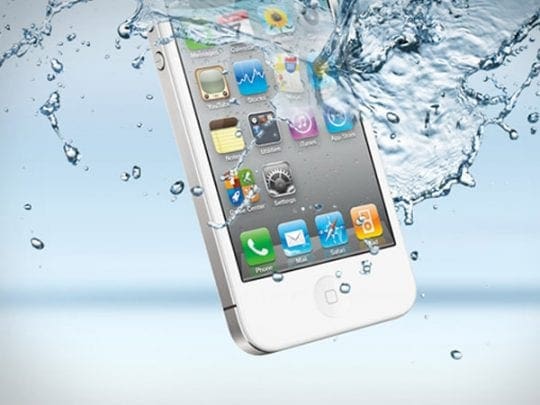
Taking a more natural engineering approach is the patent filed where the iPhone shuts off all power components of the device upon sensing changes in barometric pressure signaling under water conditions. Before completely shutting off, the device sends a notification to make a backup of all essential information to the icloud. It will be really cool to have some of these emergency features in the iPhone 7. Then we really can expect an iPhone 8 that knows how to swim or at least pump water out.
iPhone 8, A all Curved Glass Device
Recent rumors point to the fact that the iPhone 8 will sport a curved all glass device. Apple’s patent 9,146,590 refers to an “electronic device with wraparound display”, suggesting that the market-leader is also contemplating a flexible display for future smartphone releases. The curved device patent was released this month and received quite a bit of media coverage. If you examine the patent picture closely, you will see that the device does not have a HOME button any longer. It’s possible that by the time iPhone 8 Rolls out, the home button will a vestige of iPhone past.
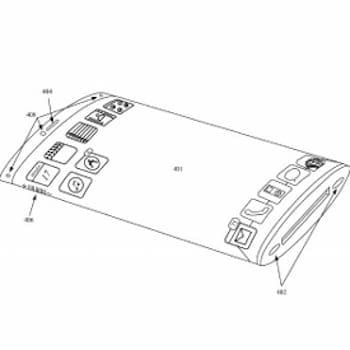
Instead, Apple’s iPhone 8 offers a sleeker and more attractive device with a glass chassis. That would be a very cool design for the iPhone 8. What may be more realistic and a step in the right direction is an edge-to-edge curved display in its iPhone 7 Pro model released in 2017. Apple software patents suggest that a user could tap on the edges of the iPhone to get precision based controls on the iOS GUI. Clearly as Apple thinks through its design choices, it’s not only looking at it the hardware but also the software features needed to get the best out of that hardware.
iPhone 8 , Sophisticated Camera with Software
Up until now, the main attributes of a phone-based camera are megapixels and speed. It’s clear that within a year or two and by the time the iPhone 8 is released, we are moving into AI and machine learning by using features of the built in cameras. This is not entirely science fiction. iOS 10 is already revamped with AI to distinguish images and photos based on Facial recognition. So it’s only a matter of time that equipped with a more powerful cameras, the software should in real time perform facial recognition AND voice recognition.
Over the years, Apple acquired a large number of companies that specialize in this area. Emotient was a facial recognition Artificial Intelligence firm as was Faceshift, a swiss firm Apple acquired last year. Additionally, according to a report published by Business Weekly Taiwan, Apple’s recent acquisition of LinX technologies has apparently provided a method to fix any blurring issues.
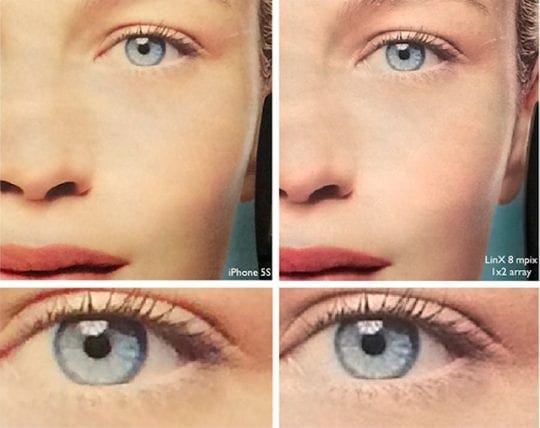
So although facial recognition features may have legal issues, at its most basic level, expect the iPhone 8 security to run off facial recognition.
Let’s think of it this way: if your latest model iPhone, iPad or Mac recognizes you and powers on your device that opens new avenues for biometric identification. Touch ID will become a thing of the past.
What does iOS 10 suggest for the Next Gen iPhone ?
If you are tinkering with the beta version of the iOS 10, you’ve probably noticed that you can operate your new phone very easily without actually touching any of the buttons on the device. Parts of this rumoured feature are found hiding within the iOS10 code, strongly suggesting that Apple either is or was working on such a design. Developer Andy Wiik found that by injecting code into an iOS 10 simulator he found white-on-black versions of the Settings app, apparently ready for a rumoured setting that would turn all parts of the software that colour.
Dark modes show up especially well on OLED screens, as well as helping preserve battery. The screens show blacks as near locked screen black, ensuring high contrast. This setting requires much less energy keeping the phone and battery running more efficiently and for longer times between charges.
Another iOS10 feature we’ve seen is you raise your iPhone and it wakes up. No more pressing the power/on buttons. The Raise-Wake feature takes advantage of built-in motion sensors.
Similarly once your iPhone has risen from its slumber and you have entered the required credentials, you can pretty much control all the basic settings from the control center on iOS 10. This includes controlling volume, swiping right and using your camera to shoot pictures or videos and swiping left to access numerous widgets. You can set your iPhone to autolock after brief period of inactivity. All that and an updated Siri with lots of new features and more power to align with the growing movement of voice based search.
Touch ID is the only button that you may use for credentials. A recent patent shows Apple working on technology that could make the entire device read your fingerprints. In other words, you wouldn’t need a touch ID–the whole phone is that. More importantly If the concept of touch ID is replaced with voice or facial recognition security, the iPhone 8 will be a sleek and sexy device without any buttons on it. Imagine, we could Apple Pay transactions using just our face or our voice.
There is still one more WWDC before the iPhone 8 is released. We think iOS 10 is a hit, but just wait till 11 is released and Apple will really show us where iPhone 8 is heading.
Summary
It is too early to guess one way or the other as to what features the next gen iPhone 8 will come equipped with. One thing is however becoming very clear. Apple will need to com out with a premium iPhone device in order to command pricing premiums and make its customers and shareholders happy. These rumor mills will continue till the product is released. Given that there is not going to be major refresh to the iPhone 7 models, it appears that most of the dramatic design features will be reserved for the iPhone 8 models.
Given the current iPhone 7 release rumors, once can expect the iPhone 8 to be released sometime in fall of 2017 or even by 2018. That is in fact a long time to wait and hope for a iPhone with some serious bells and whistles.
As Apple product owners, what are the top 3 features that you would like to see in the iPhone 8?